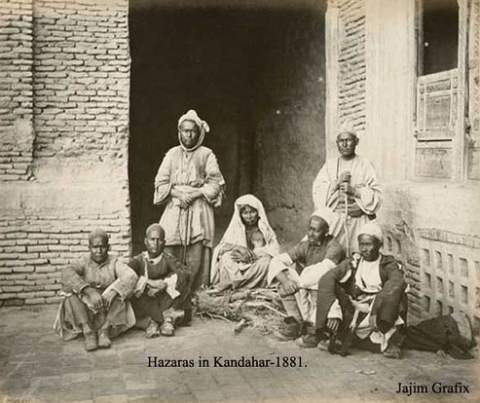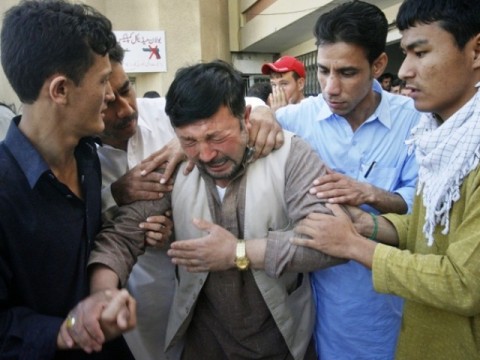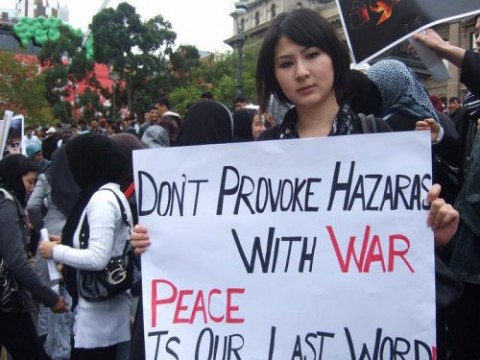by Ali Karimi
Being a Hazara in Kandahar, Afghanistan
An Indonesian Buddhist named Agustinus Wibowo who worked in Afghanistan for more than two years had a great deal of troubles for being mistaken for a Hazara. A report about him says:

The Indonesian Embassy in Kabul advised him to pretend to be Sunni while in Kandahar, the birthplace of the Taliban, for safety reasons. Due to his looks, Agustinus said he was often suspected to be a member of the Hazara, a longtime enemy of Kandahar’s Pashtun people.
Although he took care to don a Pashtun-style shalwar kameez, he never forgot to wear a peci to display his Indonesian identity.
However, he said this was often not enough to convince the sometimes hostile locals, who would belligerently question him about his religious affinity.
“Apparently, being a Muslim is not enough. They need to know whether you are Sunni or Shiite,” he said.
He said the Pashtun favored Sunnis and were hostile to Shiites. In certain places, such as Kandahar, Agustinus said, having the “wrong” religion could cost you your life.
Being a Hazara in Quetta, Pakistan
There are more than one million Hazaras in Quetta, Pakistan who have been arriving there in response to hostilities in Afghanistan since mid 19th century. They have been the subject of sectarian and ethnic attacks for years. Now they have began to move to other Pakistani cities in order to save their lives, but will the Pashtun and Baluch fanatics leave them alone in other cities?

On 6 May, six members of the Hazara Shia minority community were gunned down in an incident that the Lashkar-e-Jhangvi (LJ), an extremist sectarian Wahabi organization, later claimed responsibility for. On 18 May, another seven were gunned down, and once again the LJ claimed responsibility.
Last year, 65 Shias were killed in Quetta when a procession became the target of a bomb blast on 3 September. Two days earlier, a blast in Lahore killed 35 others. According to the Human Rights Commission of Pakistan’s report entitled State of Human Rights in 2010, 418 people were killed in various attacks on Muslim sects, including 211 in suicide bombings last year.
Over 200 Shia have been killed in Balochistan in the last three years, the report said “The Lashkar has given us the deadline to leave the province by 2012 and have warned of further attacks,” said Awab. “Even the police are helpless in this regard as they too have been under attack by these rogue elements.”
“The Hazara and the Shias are a peaceful community and generally well settled,” he added. “While earlier they were victims of kidnappings and robberies, now religious extremists threaten them.”
The matter, according to Aly Khan, has been fuelled by religious differences. “Balochistan Province has Balochs and Pathans in the majority when it comes to ethnicity [while] Hazara are a minority,” he said. “Then come the religious minorities. The Balochs and Pathans follow the Sunni sect, while most Hazara are Shias and most of these are residing Quetta.
Being a Hazara in Iran
In Iran also the two million Hazara immigrants find themselves the victims of a widespread discrimination from the Iranian public and government. Since unlike other Afghans in Iran who look the same as Iranians, the Hazaras have strong Asian features and this distinguishes them in the public as “Afghanis”. Despite of the fact that the
“Hazaras are Shi’a Muslims (like Iranians), they are open to more discrimination than other Afghan ethnic groups who are Sunni (Tober 2007, p. 277).
Tober, D. (2007). “My Body Is Broken Like My Country”: Identity, Nation, and Repatriation among Afghan Refugees in Iran. Iranian Studies. Vol. 40, No. 2, pp. 263 — 285
Being a Hazara in Australia
Hazaras escape Afghanistan, Pakistan and Iran and settle in the other sides of the world, but the wave of hatred follows them anywhere they go.

A couple of months ago the Afghan minister of immigration went to Australia to ask the Australian government to deport the Afghan asylum seekers because he argued that Afghanistan is safe for these individuals. In Australia 70 percent of Afghan immigrants are Hazaras. Even the non-Hazara refugees in Australia asked the immigration officials to deport their “fellow Afghans”. Australians were confused with the level of hostility from the non-Hazara Afghans and how the Afghan government was defending the rights of its citizens.
An eye-witness account of the meetings between the Afghan minister and Australian officials is to found in Persian here.
One Hazara asylum seeker took his life in an Australian camp after realizing he would be deported. I don’t blame him. A report on ABC’s website asks: “They survived rape and torture … will they survive Australian detention?”
Hazara
UINTED WE STAND
DIVIDE WE FALL